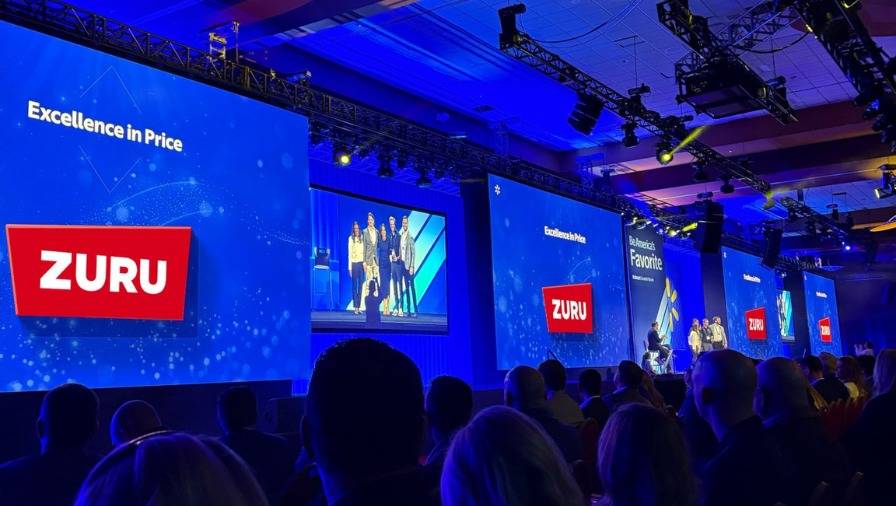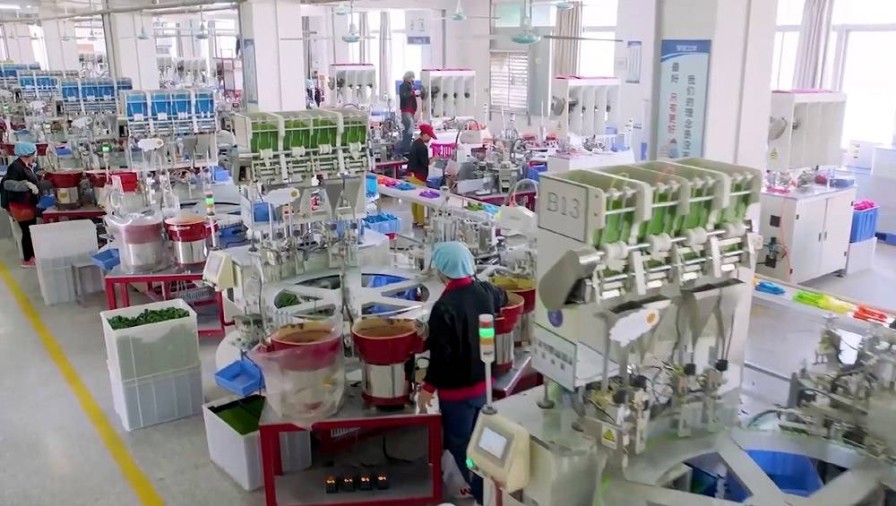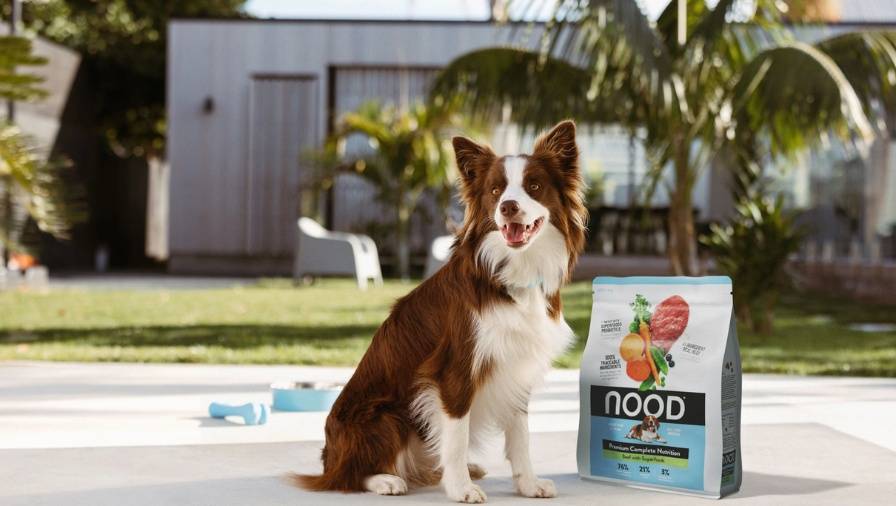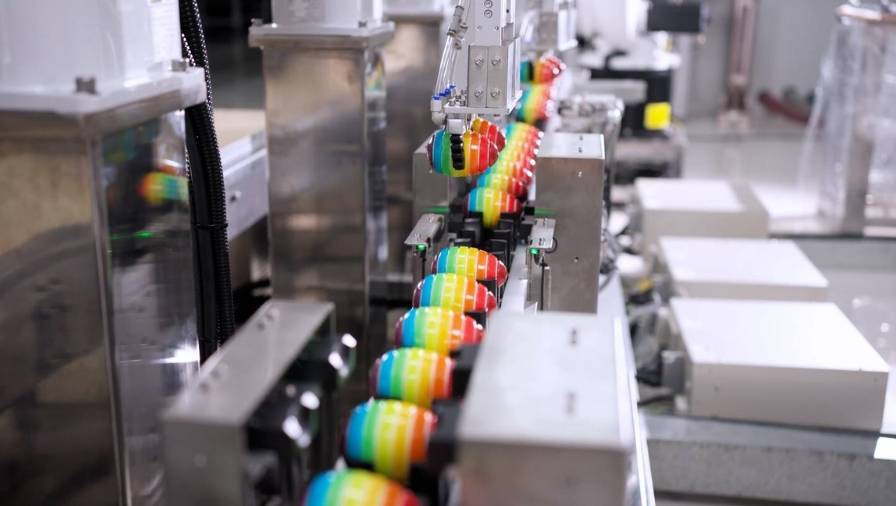Featured Rich Listers: Nick and Mat Mowbray
Nick and Mat Mowbray’s Zuru Group started life as toy company in a Cambridge garage more than 20 years ago.
Nick and Mat Mowbray’s Zuru Group started life as toy company in a Cambridge garage more than 20 years ago.
Category: Make & Sell
$20 billion
See all profiles, rankings and feature articles on The NBR List 2025 home page.
In early April, Zuru co-founder Nick Mowbray took to LinkedIn to reflect on what he called “a wild week”.
That was the week US President Donald Trump imposed a global baseline tariff of 10%.
China, however – where most of the multi-billion-dollar Zuru empire’s products are manufactured – was slapped with tariffs equivalent to 74%.
It was also the week Zuru won two ‘Supplier of the Year’ awards at US retail giant Walmart, while being a finalist in a third category (out of seven in total and up against 100,000 other suppliers).
That was “incredible recognition,” the 40-year-old Mowbray posted, but the sweeping new tariffs had “cast a long shadow”.

Zuru at the Walmart Supplier of the Year awards.
“What’s frustrating is how disconnected this policy feels from economic reality. Supply chains today are interwoven, not national. Many of the goods hit by tariffs are designed in the US, made with parts from multiple countries, and manufactured offshore – often by American companies or foreign companies like ours,” he said.
“Defensive or reciprocal tariffs can make sense. But this? It’s like dropping a bomb on the world economy. Prices will rise. Growth will slow. And it won’t be the big players who feel it first it,’ll be everyday families, small businesses, and the next generation of innovators.”
But, Mowbray added: “Zuru will come out stronger.”
Over the following weeks, a tariff tit-for-tat saw the US raise rates on Chinese goods as high as 145%.
Again, Mowbray took to LinkedIn, saying tariffs would not bring toy manufacturing back to the US. The toy industry employed more than 270,000 Americans, he said, but more than 80% of toys were made in China.

Nick Mowbray presenting to Zuru interns.
“There’s a good reason for that,” he said. “Toy manufacturing isn’t like apparel or basic goods. It requires deep vertical supply chains: plastics, electronics, molds, paint, safety testing, packaging … all coordinated at insane speed and scale. China is the only place where this ecosystem exists in one place, with the speed and efficiency required by global brands.“At Zuru, we invest heavily in automation and innovation to bring more of this capability in-house. But the reality is, even with world-class factories, it takes time to shift. You can’t replicate decades of ecosystem development overnight.
“Toys aren’t national security threats. They’re not strategic industries. They’re products that bring joy to kids and support tens of thousands of US jobs across design, retail, licensing, logistics, and more.”
At the time, Zuru expected to ship about $2 billion of goods to the US, which Mowbray said would make its tariffs worth about $3b.
“We can only hope this madness stops sooner rather than later,” he said.

Zuru factory.
Fast-forward to May 12, and there was some reprieve. That was when the US and China agreed to temporarily reduce the tariffs they had imposed on each other during the trade war: US tariffs on Chinese imports were slashed to 30% and Chinese tariffs on US goods were reduced to 10%.
“It’s tough for the US to live without China,” Mowbray says.
The group started life as toy company in a Cambridge garage more than 20 years ago but now spans three divisions – Zuru Toys, Zuru Edge (consumer goods), and Zuru Tech (construction), with more than 5000 staff across more than 30 locations worldwide.
It now describes itself as a robotics and automation company, with a relentless focus on continuous improvement (it automates at least one new process a week) and building the most efficient factories in the world, which has resulted in the group being highly profitable while remaining debt free.
Last year, NBR reported the group was on track to hit $3b in revenue. This year, the group is targeting growth to $3.9b as Toys and Edge continue their monumental rise.

Zuru pet food brand, Nood.
In Edge, the company will sell close to $1b of nappies at wholesale this year. Last year, the entire Edge division – split into baby gear, confectionary, household and home, pet food, beauty and personal care, and health and wellness – recorded $1b in revenue just six years after it launched.Its beauty business – headlined by Monday and new brand, Daise – will more than double in turnover this year, while NBR reported in May its pet care business is expected to double in size to $200m this year.
Zuru also completed a fully automated, 100,000 sqm Gumi Yum factory in the past 12 months, with strong growth expected in that business going forward.
In Toys, meanwhile, the tariffs saw Zuru implement a 10% price increase. The business is growing at a slower rate than Edge, but from a higher base, and is still competitive on price compared with all its competitors.

Zuru’s Gumi Yum production line in Dongguan China.
Last year, Mowbray told NBR Zuru’s operating costs in toys are a fraction of their competitors’ at about 8-10% versus about 40%.
In Tech – Zuru’s project to fully automate housing construction at a much cheaper cost – it is building a new house every one to two weeks, relentlessly testing and improving production, with an expectation of shipping the first test houses to locations around the world within 12 months.
Otherwise, Zuru has acquired offices in several cities all around the world. In the past year, that’s included London, Minneapolis, Seattle, Toronto, Warsaw, and Paris. It also leased a new headquarters in Auckland, at the old Spark building.
In New Zealand, it has launched a Fast Start programme, which aims to test up to 100 new products and concepts in the local market every year. The ones that succeed are then rolled out to other, bigger markets, with the group targeting a success rate of about 50% initially.

Renovation plans for Zuru’s Canadian office.
Mowbray was also linked with acquiring NZX-listed media company NZME in February, although he denied any interest in buying the business.
“Even with tariffs, Zuru’s value is unmatched,” Zuru said in May. “We’ve spent the last decade building world-class automation, not just to cut costs, but to transform how we deliver value and quality to our retail partners and consumers. Every factory and process we have endeavoured to optimise.
“On top of this, we run lean and have deeply integrated supply chains. Compare our prices in equivalent categories to a lot of our competitors and our prices, even post-tariff, are still far more competitive than our competitors pre-tariff.
“[We] truly feel like Zuru is made for moments like this … We will push hard to deliver in this environment, so push us and we will provide options and solutions.”

Nick Mowbray, left, and Mat with their mother Linda Mowbray.
A schoolboy gig making hot air balloons on their parents’ dairy farm became a toy-making unicorn for brothers Nick and Mat Mowbray.
The pair, who attended St Peter’s College in Cambridge, formally established Zuru in 2003 and soon thereafter relocated to Hong Kong without much in the way of capital, taking a $20,000 loan from their parents to buy an injection moulding machine and, from there, set up a factory in Guangzhou, China.
Basing the business there ensured low taxes, while automation further drove down costs.
Sibling Anna joined the business in 2005 and, through the process of trying and failing to launch toy ideas into the market, the trio had their first break with Robo Fish in about 2010, which went on to make more than $100m in sales.
The company is wholly family-owned, debt-free, and has never taken outside funding. Anna left her day-to-day role at Zuru in 2021 and exited the group entirely in a confidential deal in 2023.
The group also has what Nick Mowbray describes as a significant investment stake in Tesla, as well as a 2015 Gulfstream Aerospace Corp GVI G650ER jet.
Nick Mowbray now mostly lives in Auckland, spending time at the former ‘Dotcom mansion’ in Coatesville, bought for $32.5m with his siblings in 2016. Now worth about $40m, Nick and fiancé Jaimee Lupton last year completed a three-year, multi-million-dollar refit of the property. Nick also bought a Herne Bay property for $24.5m in 2023 and has a property at the exclusive Te Arai golf course.
Nick is also a big political donor, giving hundreds of thousands of dollars to both National and the Act parties.
The family jointly own property in Mt Maunganui, Matangi, property on Queen Street in Central Auckland, and farming/lifestyle blocks in the Waikato, where they grew up.
The Mowbrays are also big charitable givers. Starship, Unicef, the Salvation Army, Kids Can, Foodbank, and other causes in China and India are among many that receive funds, while efforts to fight Crohn’s inflammatory bowel disease, from which Nick suffers, are also on the list of recipients.
Last year, Nick and Lupton launched the Gingernut’s Angels foundation, aiming to raise $1m to fund IVF cycles for people trying to conceive. The foundation is named after their late daughter, who was stillborn at 24 weeks.
Sign up to get the latest stories and insights delivered to your inbox – free, every day.